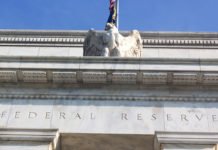China’s economic activities surprised to the upside in 1Q17. GDP expanded +6.9% y/y, beating consensus of, and 4Q16’s, +6.8%. Growth was led by a +7.7% expansion in the tertiary sector, followed by a +6.4% growth in the secondary industry. Economic activities also strengthened across the board in March. Retail sales expanded +10.9%, accelerating from +9.5% in the combined January to February period. Industrial production (IP) growth improved to +7.6%, the fastest pace since end-2014, from +6.3% in the January-February period. The market had anticipated a mild drop to +6.2%. Fixed asset investment (FAI) increased 9.2% y/y to March, up from +8.9% in the January-February period. Looking into the details, investment gained +19.8% in the primary sector, +4.2% in the secondary sector and +12.2% y/y in the tertiary sector. Moreover, private investment expanded +7.7% y/y in March, up from +6.7% in the prior month, while the growth in public investment slowed to +13.6%, from +14.4% in February. For the first quarter of the year, retail sales grew +10%, IP rose +6.8% with manufacturing output up +7.4% while fixed asset investment expanded +9.2%, of which real estate investment and tech investment up +9.1% and +22.6%, respectively.
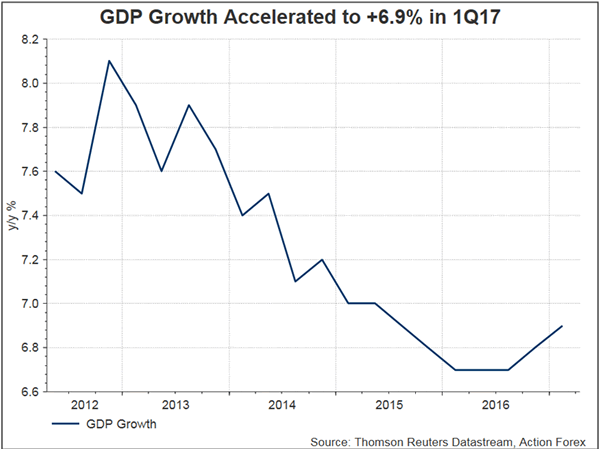
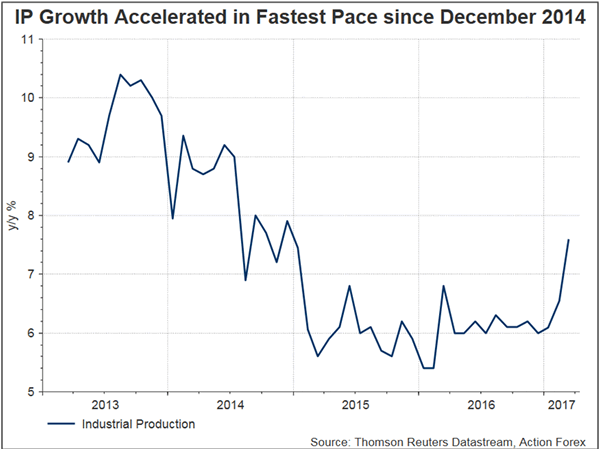

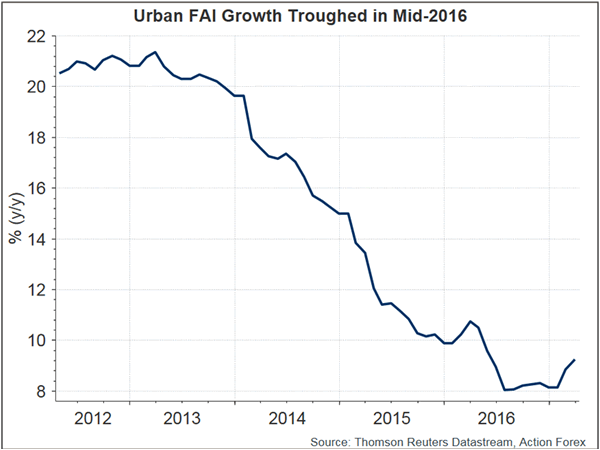
Housing and lending remained the key drivers to Chinese growth in 1Q17. Besides strong FAI growth, a report from National Bureau of Statistics (NBS) shows that new home prices gained +0.6% in March, doubling the growth in February. Although property sales growth eased in March, the three-month moving average suggests that it remains in an uptrend in both volume and value terms. Growth of land sales and housing starts also stayed firm. The strong property cycle is expected to help avoid a sharp slowdown this year.
As indicated in PBOC’s report published late last week, the country’s new renminbi loans dropped to RMB1.02 trillion in March from RMB1.17 trillion a month ago. The market had anticipated a pickup to RMB1.25 trillion. It was estimated that 40% of the new loans was property lending loans (developers plus household) which soared +26% y/y to RMB28.4 trillion at end-March. The new loans figure would increase to RMB 1.16 trillion after adding back interbank lending. Incremental Total Social Financing (TSF) rebounded to RM 2.1 trillion. TSF outstanding balance gained +12.5% y/y. Broad money supply (M2) growth slowed to +10.6% y/y, the slowest pace in 8 months. Moderation in loan growth can be viewed as a result of the government’s tighter policy measures. Yet, restrictions of acquiring loans through traditional channels have encouraged shadow lending. New shadow lending (including entrusted loans, trust loans and bank acceptances) was reported to have reached RMB2.05 trillion in the first quarter, up +320% from the same period last year.
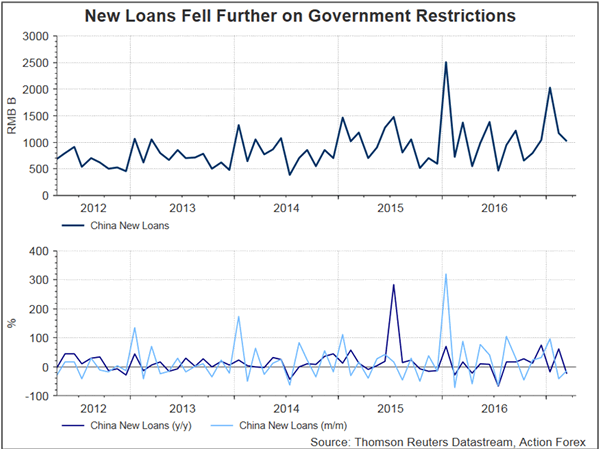
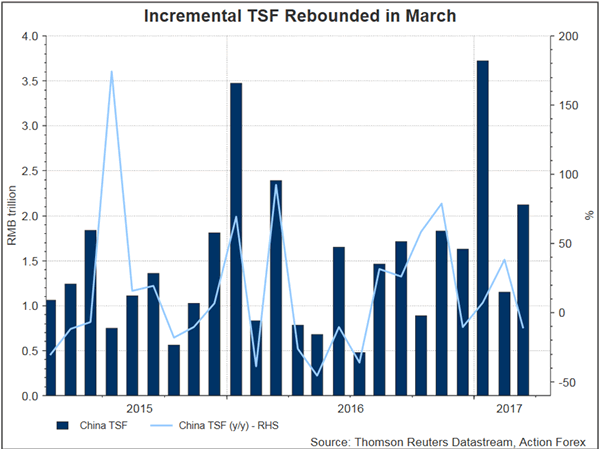
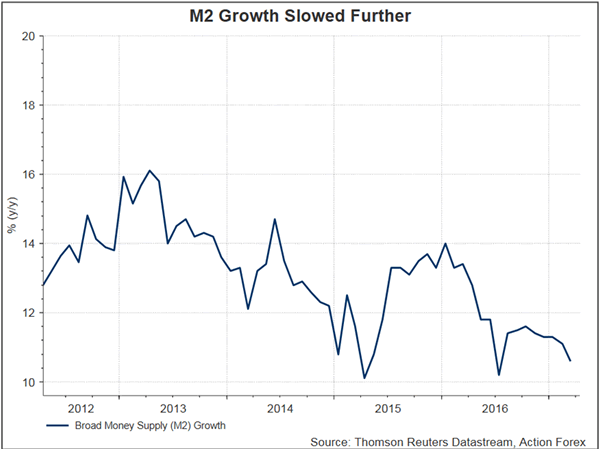
The current environment suggests that China’s property market has remained buoyant, despite the government’s tightening measures. Investors/speculators have been driven to shadow lending, an activity that the government has been trying to curb, for funding. Yet, we expect the government would have few choices but to continue its monetary tightening measured targeting the asset markets








